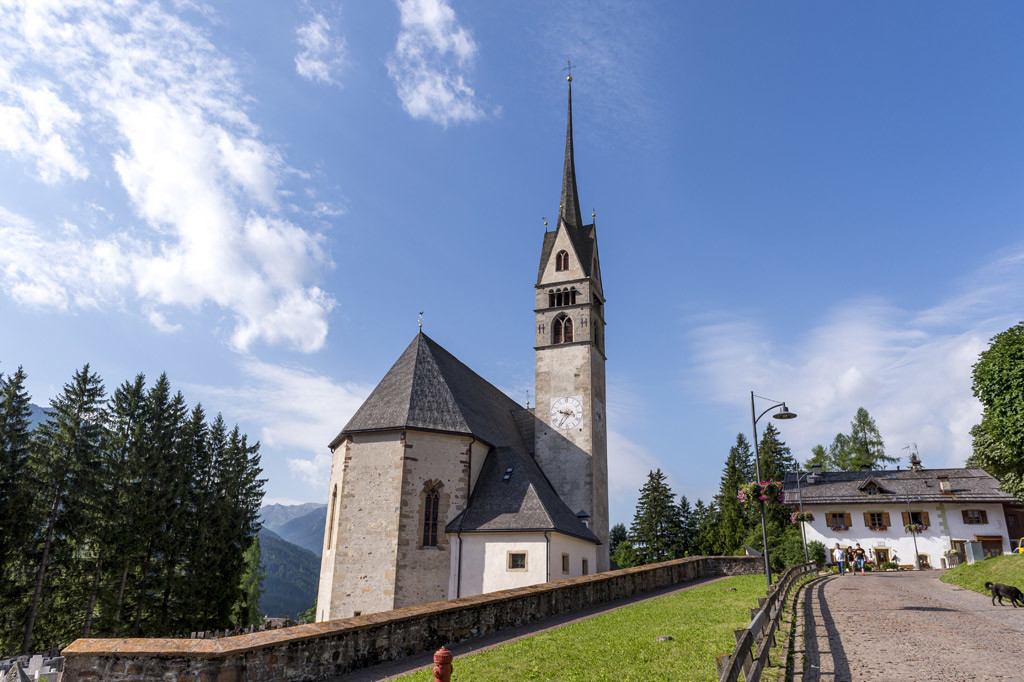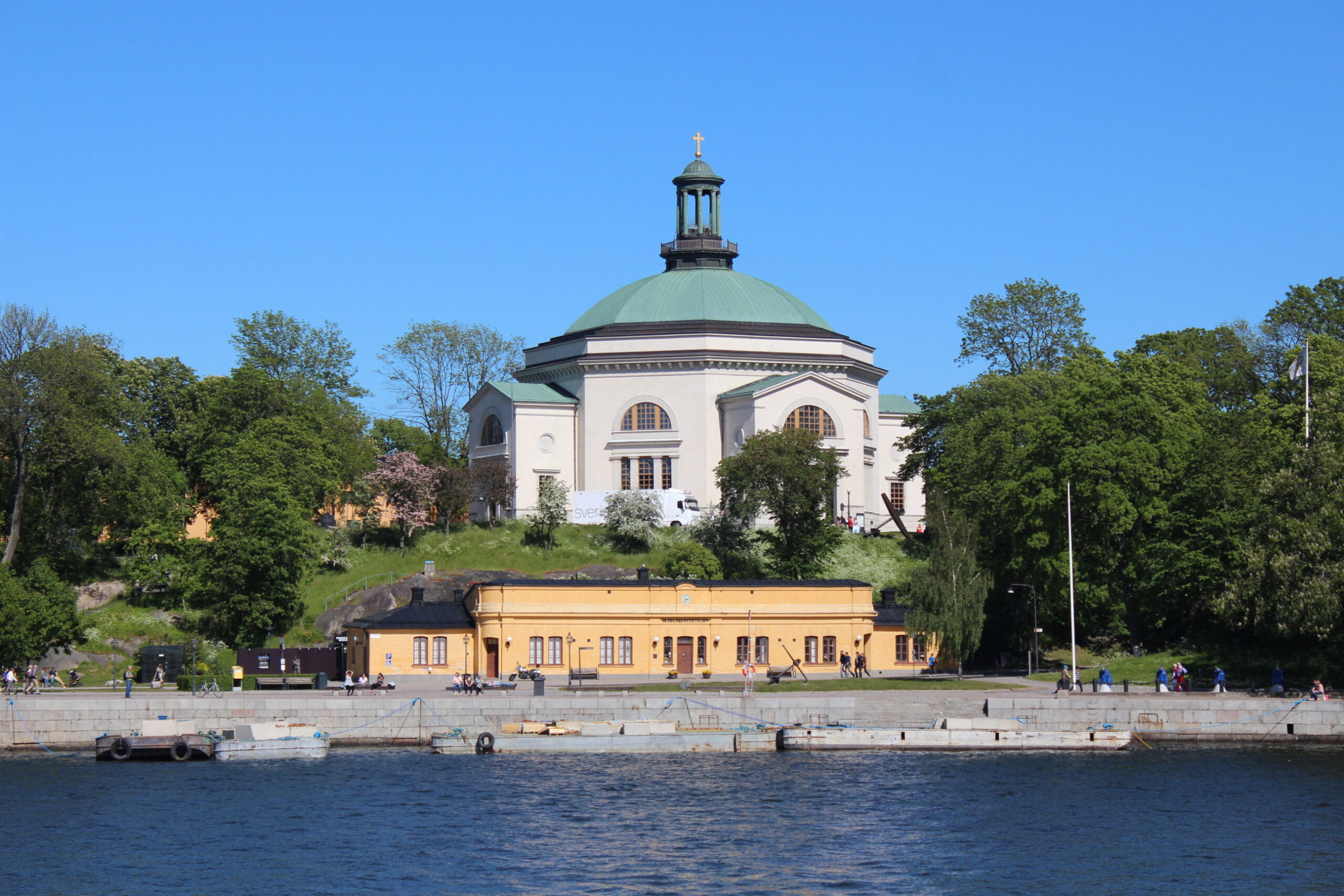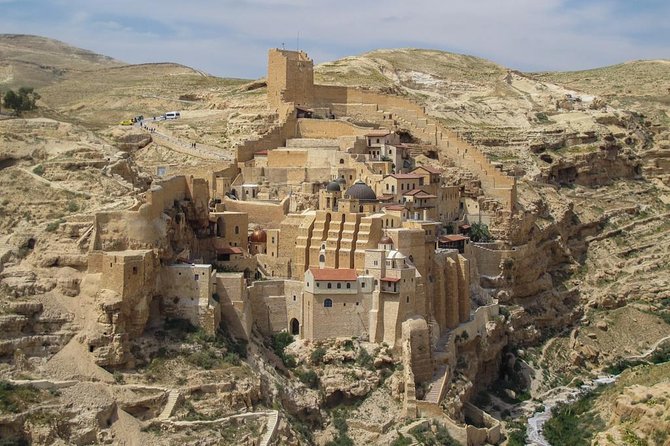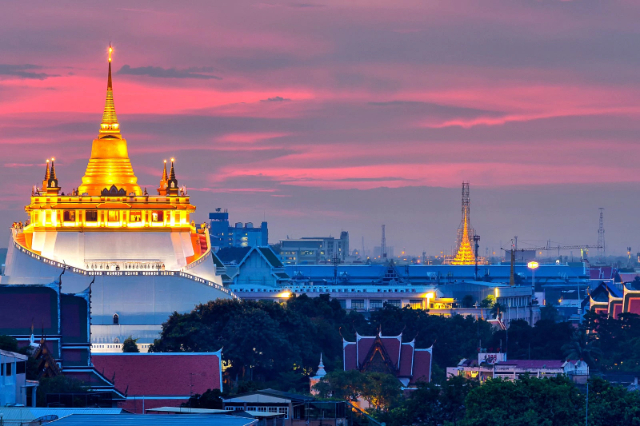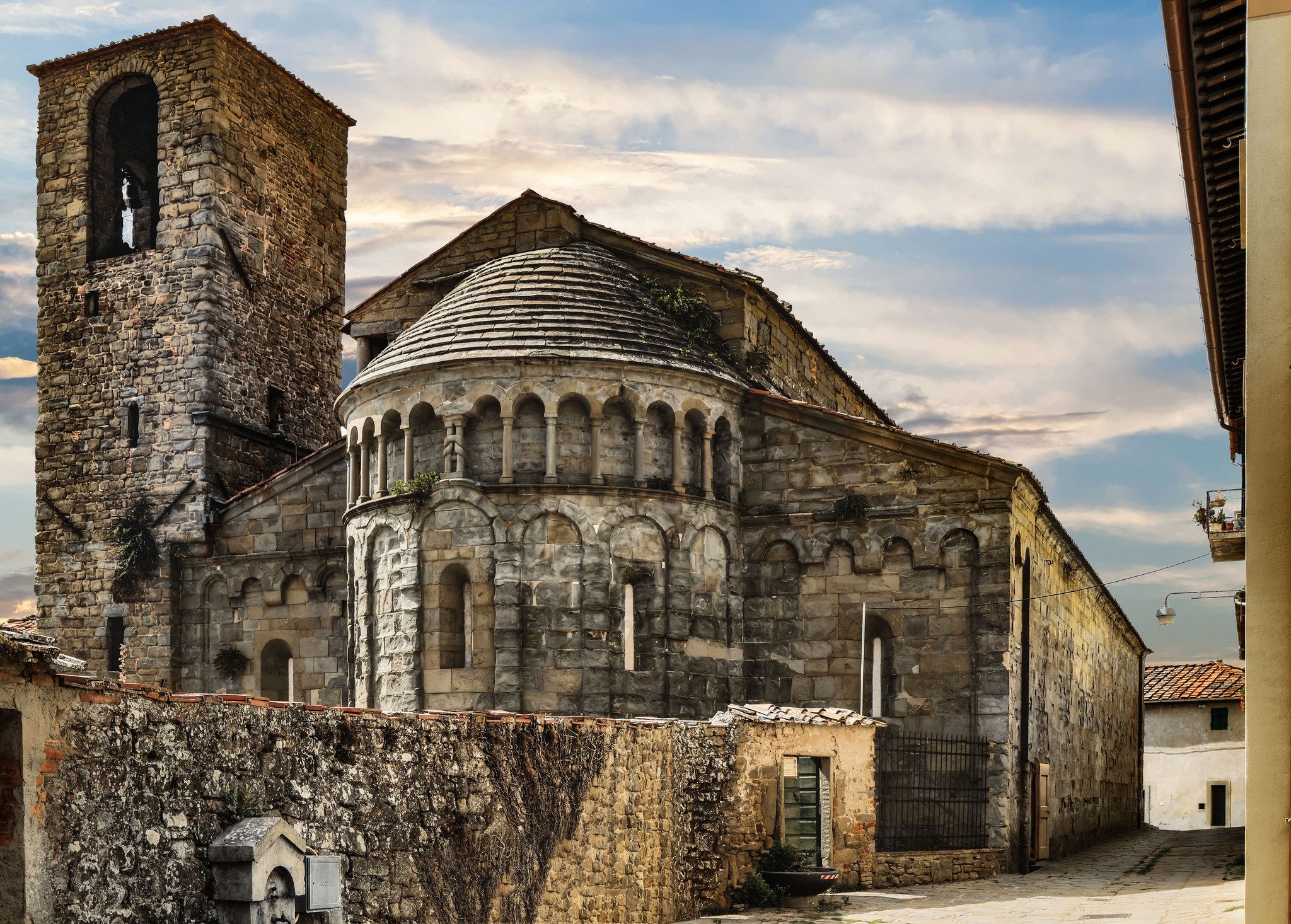It is considered the mother church and for centuries was the fulcrum of the ecclesiastical and civil life of the valley. The Pieve di San Giovanni, with its double dedication to the Baptist and the Evangelist and the presence of a crypt dedicated to San Michele Arcangelo, recalls Longobard religious customs. The existence of the parish church is known since 1227 and of the first Romanesque building, at the level of the crypt, there are the remains of the apse with a remarkable fresco. The present Alpine Gothic style is the result of reconstruction in the second half of the 15th century. The Romanesque bell tower with three belfries and arrow-shaped spire was raised to 67 metres during the enlargement.
The main portal to the west is a slightly pointed arch; at its sides are two holy water stoups supported by marble lion heads from the 13th century, surmounted by the "lamb", the coat of arms of the Prince-Bishop of Brixen.
The Gothic interior has three naves supported by cylindrical syenite columns from Monzoni, without capitals, from which a geometric interweaving of thin plastered pilasters branches off, dividing the entire vault into triangular or quadrangular sails.
Three of the five walls of the apse are entirely frescoed. The figures on the south side were painted by David Solbach in 1578: at the top there is a representation of the "Trinity" in the form of a "Theophany" (the Father and the Son sit side by side, between them a dove symbolizes the Holy Spirit), wrapped in light and with curious stylized angels at the base. The two large paintings below depict the biblical episodes of "Susanna at the Bath" and the healing of Tobias from blindness by his son Tobias. The paintings above the door to the sacristy, on the other hand, are the work of the South Tyrolean school of Ruprecht Potsch (1498) and depict the life of John the Baptist: the penitent saint in the desert, his preaching to the crowds, the baptism of Jesus, the beheading and the executioner handing John’s head to Salome. On the adjoining wall there is another sixteenth-century scene, executed with mixed technique: the "Last Supper".
The church also preserves some valuable works of art: the magnificent marble baptistery donated in 1538 by Silvestro Soldà; the precious big altar piece placed behind the high altar, painted in 1786 by a young Antonio Longo, a very famous priest painter from Val di Fiemme, depicting the baptism of Jesus.
The twelve wooden Stations of the Cross, hanging along the walls of the presbytery and the side aisles, are considered the best work of Tita Pederiva of Soraga, a pioneer of the Fassa chisel (completed in 1954).
From the outside, on the south side, a small portal leads to the crypt or "Rozar" (in Ladin). The interior with pointed arches, altar and statue of the Madonna are neo-Gothic. Of particular note is the fresco in the Chapel of the Dead.
